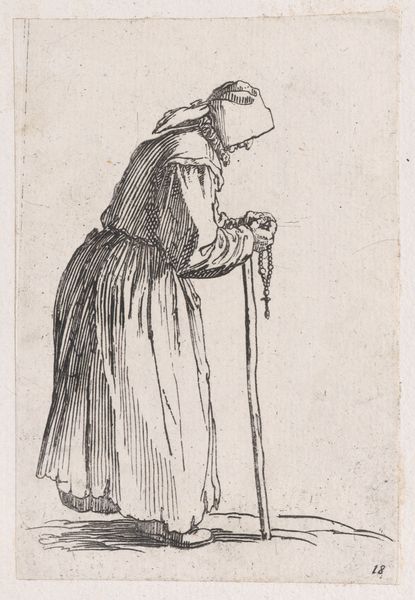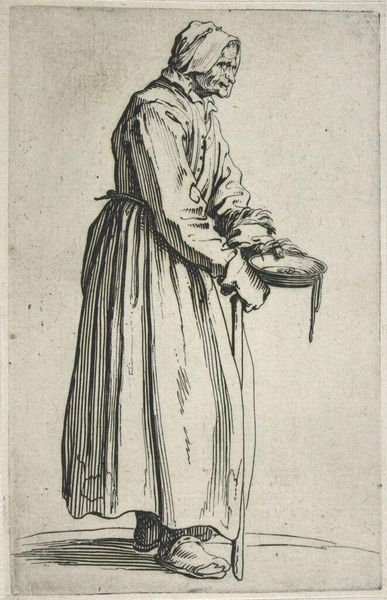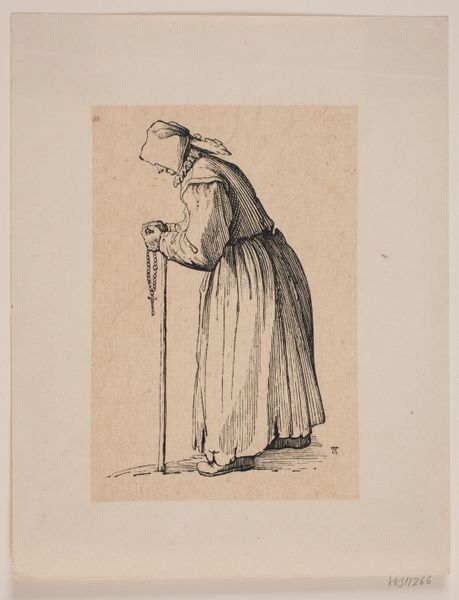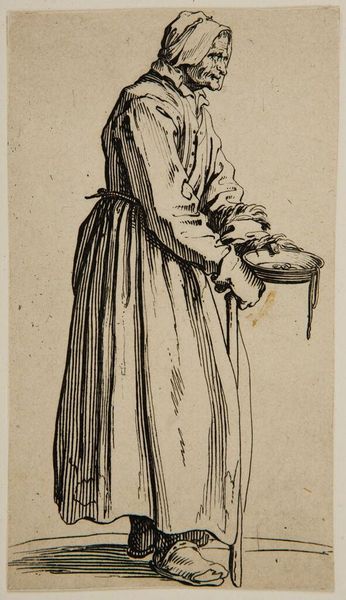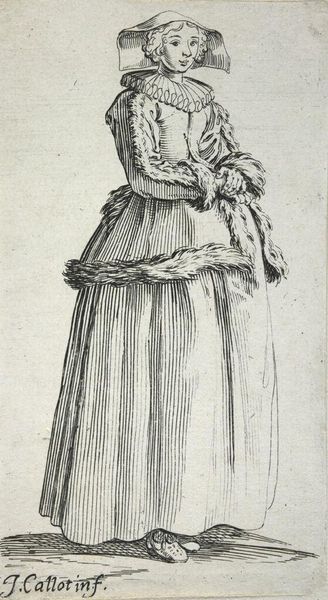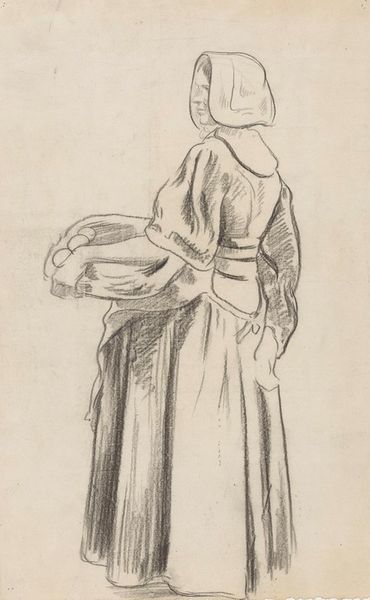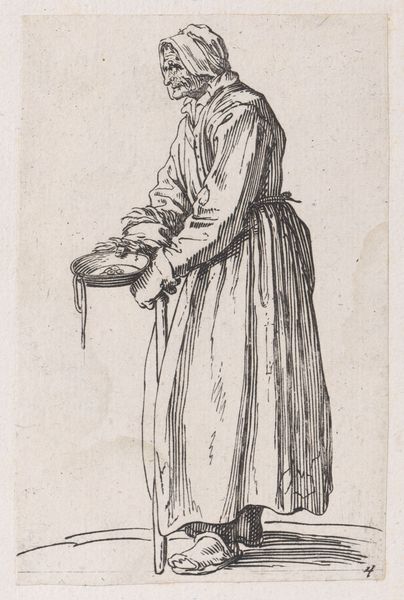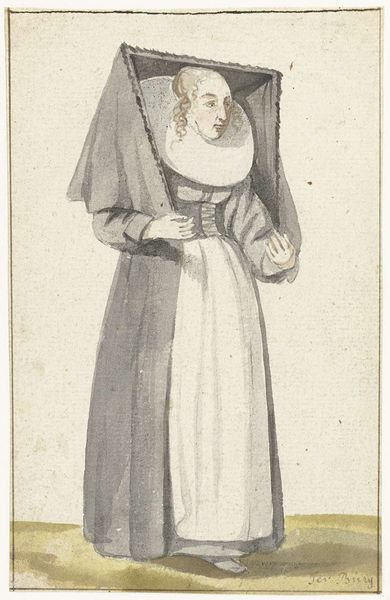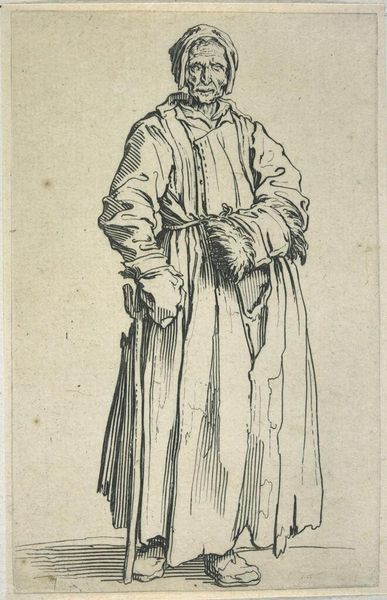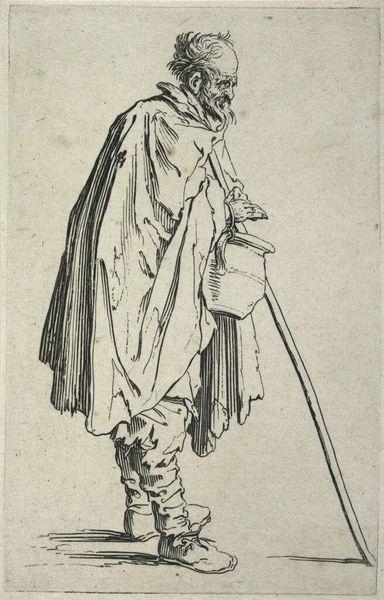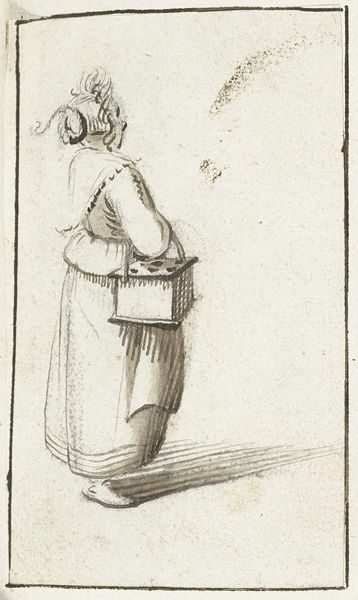
Copyright: CC0 1.0
Curator: This is Jacques Callot's "Beggar Woman with a Rosary," currently residing in the Harvard Art Museums. It captures a solitary figure in quiet contemplation. Editor: It’s striking. The etching’s line work emphasizes the texture of her simple clothing and the stark reality of her situation. You can almost feel the weight of the rosary in her hands. Curator: Callot's series on beggars wasn’t just observation; it reflected societal attitudes and class structures of the time. These images were circulated widely, shaping perceptions of poverty. Editor: And speaking of circulation, the etching itself is a fascinating process, a reproducible medium that democratizes art, making images of poverty available on a wider scale. Think of the labor and skill embedded in each print! Curator: Indeed, Callot’s technical skill, particularly his use of etching, allowed for incredible detail that served to both document and, arguably, to editorialize the lives of the marginalized. Editor: It all comes down to the ways in which we choose to represent labor and the human condition through art. This piece makes you think about the materials that make our realities. Curator: It makes me think about the role these images played in shaping attitudes toward poverty. Editor: Yes, a point well taken.
Comments
No comments
Be the first to comment and join the conversation on the ultimate creative platform.

